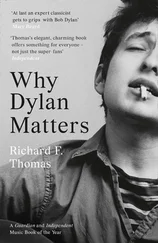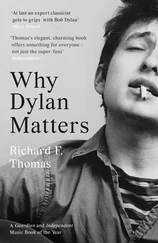Despite this, for many it is dangerous to speak about race and better to talk about racism as a set of practices produced by the ‘ideology’, or what has been referred to as the ‘folk idea’, of race (Fields et al. 2015; Haider 2018a). However, race is not ‘stuck’ in the nineteenth century, and, as I discuss in greater detail in Chapter 2, it did not ‘end’ with the Holocaust, Apartheid, or Jim Crow. I disagree that it is sufficient or possible to talk about racism without explaining the genealogy of race as a system of rule and revealing this process of continual reproduction. I believe that racism is better understood as beliefs, attitudes, ideas, and morals that build on understandings of the world as racially delineated. I explore the evolution of racism, only coined at the end of the nineteenth century, in order to make sense of intra-European racial divisions, predominantly antisemitism, in Chapter 2. My point here it that we need to work with both concepts – race and racism – because they are reliant on each other. I prefer to label my approach to scholarship ‘race critical’, rather than the more common ‘critical race’, in recognition of the fact that while we can and should use race analytically, we should also question its terms.
Preferencing racism over race runs a certain risk because, outside of scholarly and activist conversations, racism is used in a very particular way in the public domain to confer a moral judgement. It is now universally understood that to be racist is to have erred morally, as an individual. This is why, as Sara Ahmed has shown (Ahmed 2012), the primary response to accusations of racism is horror and outrage: how dare you call me a racist? And as the Aboriginal rapper Adam Briggs said after Australian football players appeared at a party in blackface, ‘People look at me like it’s my problem. Like pointing out racism is worse than the act itself. Saying “that’s racist” creates more drama than the actual blackface situation’ (McCormack 2016).
Racism has been successfully personified as embodied by the bad attitude of ignorant or ‘vicious’ individuals (Garcia 1999). While, as Lewis Gordon argues, ‘bad faith’ always plays a role in racism, it is not, the full picture (Gordon 1999). And while we must be careful not to allow an emphasis on the structures, processes, laws, and practices that bring race to life to deny individual responsibility for racist behaviours, the predominant approach to racism which centres on the punishment and ostracization of a minority of individuals ‘unlucky’ to be ‘caught in the act’ has been far from sufficient as an approach to ending racial rule. As the late founder of the London Institute of Race Relations, Ambalavaner Sivanadan, said scathingly in the 1980s, the ‘racism awareness training’ events that became popular in the UK ‘removed state and institutional responsibility for racism, instead turning it into a “natural” social phenomenon independent of material conditions, a “white disease”’ (Srilangarajah 2018). Racism itself is not a pathology, even if the fervour with which its borders are policed can appear irrational.
Racism’s apparent unreason plays a role in pushing race as a serious subject to the margins of scholarship. This, as well as the balder fact that there is systemic benefit to be had for maintaining what the philosopher of race Charles Mills calls a structural ‘white ignorance’ (Mills 2007), contributes to a profound lack of racial literacy in the public sphere. Lani Guinier describes racial literacy as ‘an interactive process in which race functions as a tool of diagnosis, feedback, and assessment. [R]acial literacy emphasizes the relationship between race and power ... [and] constantly interrogates the dynamic relationship among race, class, geography, gender, and other explanatory variables’ (Guinier 2004: 114–15). Racial literacy pedagogy has the potential to unsettle the ‘white comfort’ underpinning the dominant approach to racism, which relies on individualized, moral accounts and that sees it as out of the ordinary, extraneous, and excessive to white self-understandings. To cite a student who attended Odette Kelada’s racial literacy course at the University of Melbourne, ‘Growing up I was never taught to think about my race as something that influenced the opportunities that I got or the way that I was treated, whereas as a white person, that has framed my entire existence’ (Wang 2018). However, this kind of opportunity to enhance racial literacy is rare and, with the increasing right-wing backlash against ethnic and gender studies around the Global North, the slight opportunities that do exist risk disappearing if we are not vigilant. As Suhraiya Jivraj argues, in universities, students ‘rarely get to hear their lecturers teach or facilitate “safe” classroom discussions about racism, particularly outside of specialist modules. To talk about racism or even (institutional) whiteness has become almost taboo’ (Jivraj 2019). And while, as Ali Meghji notes, exciting conversations are happening among radical, Black, and other racialized students about how to ‘decolonize the university’, these are nonetheless happening within settings that are still undergirded by coloniality and an attendant epistemic hegemony which construes ‘provincial’ western knowledge as both superior and as universally applicable (Meghji 2019).
Why Race Still Matters should be read not as an appeal, but as an affirmation. Race, Cornel West wrote, simply does matter (West 2017 [1992]). As you read this book, however, you will notice that I am frustrated at how little race is said to matter. In fact, when those who face racism speak out, they find themselves policed for ‘making it about race’, as though they – not the persistence of racial rule – were responsible for their own oppression. As one headline in the French republican magazine Marianne screamed: ‘Race obsessives on the offensive. They import American political correctness, they infiltrate the universities, clubs and unions, they want to ban art, they want to end universalism’ (Girard and Mathoux 2019). This book, then, is a call to notice not just when and how race matters but when, how, and why it is said to be of no significance. It is a call to notice that talking about race mattering is so often equated with extremism, even as violence proliferates in the name of an idealized racial purity.
Why Race Still Matters circumnavigates a range of debates in the contemporary politics of race. It is not a textbook, and neither is it a holistic account. Supplementary reading into terms I introduce, such as racial capitalism, white supremacism, or racial rule, will be necessary if, as I hope, I have managed to convince you that we all need more and better racial literacy. Therefore, the book explores trends in the politics of race that I believe are significant and which I have been tracking for a number of years.
This book is a call to notice not just when and how race matters but when, how, and why it is said to be of no significance.
In Chapter 1, I propose that it is pointless to argue about race using the terms of the discredited and bogus concepts of ‘racial science’. Efforts to demonstrate that race is socially constructed and not a biological reality have largely failed, as can be witnessed in the resurgent popularity of so-called ‘race realism’ and the defence by prominent academics and public figures of eugenic research in the name of ‘academic freedom’. Rather, we need to theorize race as a political project with ongoing effects.
Chapter 2posits that the power to define racism is taken away from those most affected by it. The widespread tendency to question what is and is not racism should be understood as a form of discursive racist violence. However, while the habit of labelling obviously racist events as ‘not racism’ by a defensive white public is growing, this is not new. Rather, to understand why there is so much debate about what can and cannot be called racism, we need to revisit the history of its evolution as a concept.
Читать дальше












